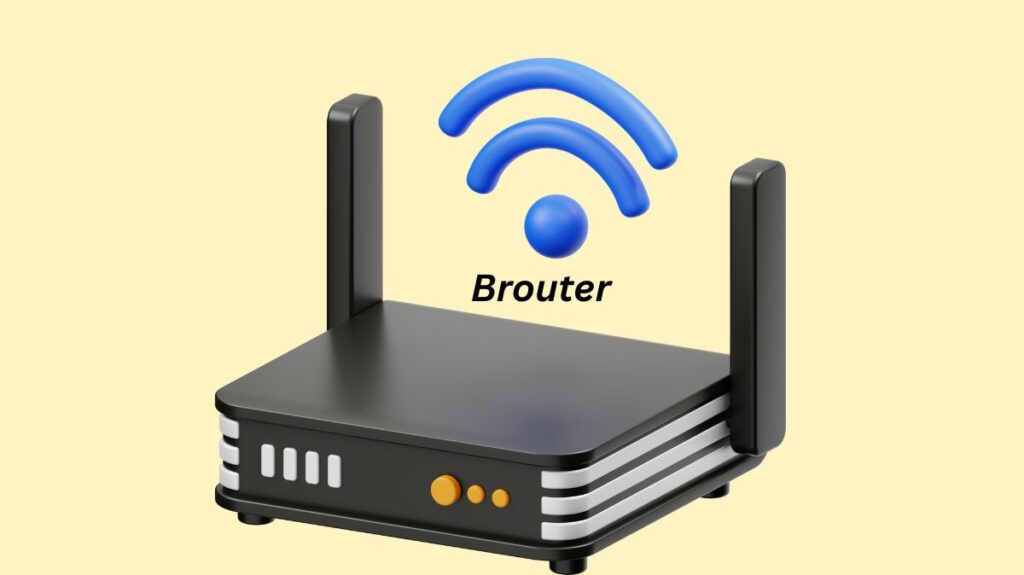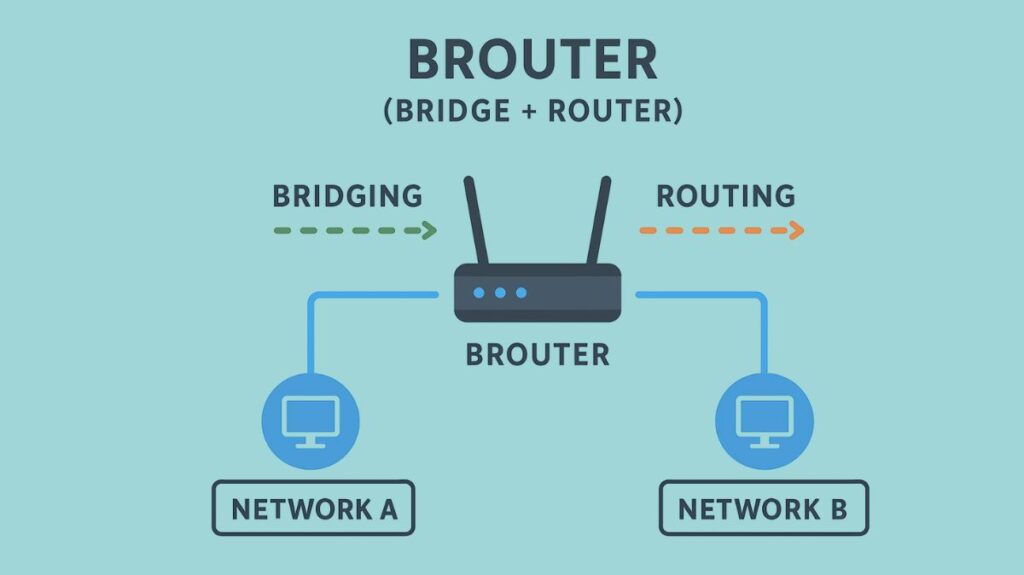Brouter Definition

A bridge router, often shortened to brouter, is a network device that unifies the functionalities of both a bridge and a router. This dual capability allows it to operate across different layers of the OSI model: at the data link layer (Layer 2) like a bridge and at the network layer (Layer 3) like a router.
How Brouters works

- Dual Functionality: The dual purpose of a brouter is to choose the type of data packet it receives. It functions as both a router and a bridge for routable and non-routable protocols.
- Packet Handling:
- First, the brouter examines the packet’s IP address.
- By using network-layer information, the router acts as a router, forwarding packets to the appropriate location across numerous networks in the event that the target IP address is not linked to any of its local ports.
- The router serves as a bridge, forwarding the packet directly to the destination based on MAC addresses within the local network in the event that the packet uses an unknown protocol or the destination IP address is connected to one of its local ports.
- Filtering: Brouters have the ability to filter data, allowing some information to enter the local network while sending unwanted information to another network. Bridged protocols can benefit from the use of techniques like filtering and learning to reduce potential congestion.
- Layer of Operation: Network layer is where routers typically operate, though they can also operate at the data link layer.
Key Characteristics and Features
Combined Functionality: Their primary benefit is their ability to effectively manage both routing and bridging activities, which offers a significant amount of flexibility in network management.
Layer 2 and Layer 3 Operation: The network and data link layers are where Layers 2 and 3 are designed to operate.
Protocol Handling and Conversion: By efficiently handling and converting between several protocols, Brouters enables communication across networks with different standards.
Enhanced Network Segmentation: By finishing these activities, networks can be more effectively divided into segments, potentially leading to improved performance and security.
Flexibility and Compatibility: Brouters can be dynamically modified to adapt to shifting network requirements and are interoperable with a broad variety of networking devices and protocols.
Benefits of Using Brouters
Improved Network Efficiency: They make network traffic management easier by controlling both bridging and routing.
Cost-Effectiveness: By combining two functions into one device, hardware and maintenance costs can be decreased.
Simplified Network Management: Network administration can be simplified, and setup errors can be reduced by having fewer devices under supervision.
Enhanced Performance: Network performance can be enhanced by routers by directing data packets along efficient paths.
Increased Flexibility: The ability of networks to handle several protocols and switch between bridging and routing modes leads to greater flexibility in network design and operation.
Uses of Brouters
Brouters are employed in various networking scenarios:
Enterprise Networks: In large organizations, enterprise networks help manage complex data flow and enable efficient communication across multiple departments.
Hybrid Networks: Because of their versatility, networks can benefit from using both conventional and contemporary communication protocols.
Network Transition: By supporting historical protocols and encouraging the adoption of new standards, brouters can assist in the transition from antiquated to more contemporary network technology.
Interconnected Networks: When performance needs to be maintained when many networks are connected, interconnected networks provide a seamless solution.
Implementation
The infrastructure of the network must be assessed before a brouter can be deployed. A brouter that meets certain requirements must be selected, configured for both known and unknown protocols, integrated with existing devices, and its performance must be routinely checked.
Historical Context and Current Prevalence
At one time, brouters were considered inexpensive because they could resolve several connection problems with a single device.
They are, however, becoming less prevalent. Specifically, Layer 2 switches and Layer 3 routers are examples of specialised equipment that has incorporated these features. Despite the fact that the term “brouter” is still in use, most of the devices that are genuinely called such are routers that have been configured to also function as bridges. Routers are more likely to behave like brouters than bridges due to their complexity.
Advanced Features and Future Trends
Modern routers have NAT, load balancing, redundancy and failover, VPN, firewall, and QoS. Brouter technology is expected to be more scalable, support IoT connectivity, interact with SDN, improve security, and use AI and machine learning for predictive maintenance and traffic optimization.
